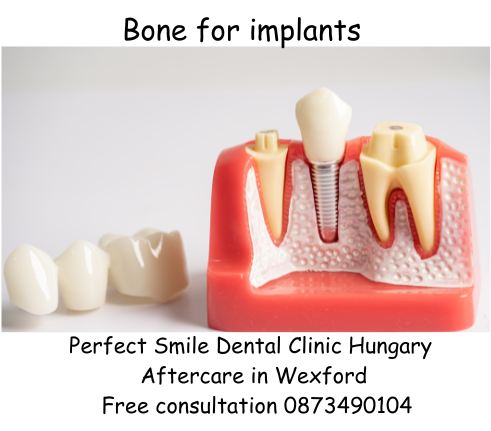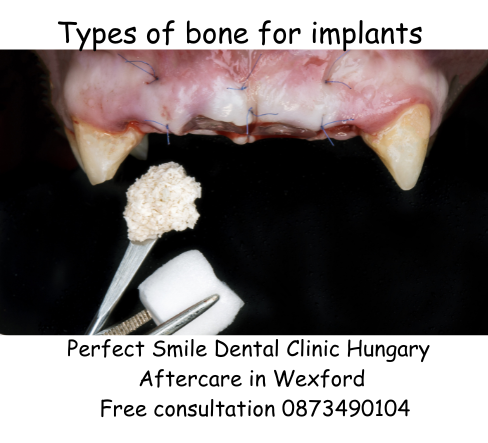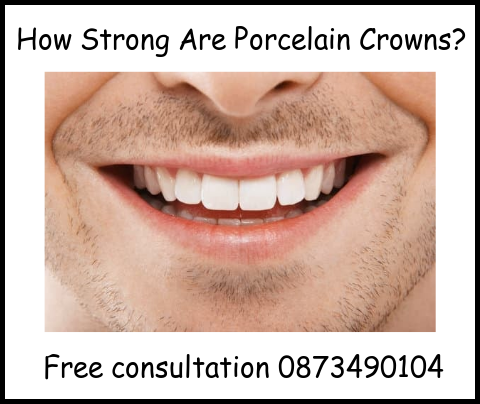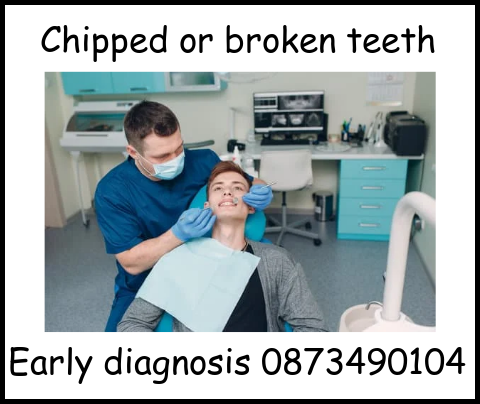Bone for implants
Bone for implants is a common enough question that patients want answers to in relation to improving bone structure enough to support an implant.
We provide low cost bone for implants treatments in Perfect Smile Hungary, ring Fintan 0873490104 for a consultation in our Irish clinic in Wexford.
Different Types of Bone Used for Implants
If the natural bone isn’t enough, surgeons and dentists have some creative ways to get things ready for implants.
Bone graft for a dental implant is a common enough procedure where bone is surgically added to the area where not enough exists.
There are a few main sources:
- Autograft: This is bone taken from elsewhere in the same person’s body, often the chin, hip, or even another part of the jaw. It’s great because your body won’t reject your own bone.
- Allograft: This is bone donated by another person, usually processed and sterilized from a tissue bank. The body usually accepts this well, and it saves another surgery site for the patient.
- Xenograft: This bone comes from animals, often cows. It’s processed to remove animal cells, leaving a mineral structure similar to human bone.
- Synthetic bone grafts: Made from bonelike minerals or bioactive glass. This option is handy for patients who want to avoid using donor or animal bone.
Each type has its own set of pros and cons, and most dentists or surgeons will walk you through the choice based on your specific situation.
Patients often like the idea of using their own bone, but modern synthetic and processed grafts are pretty reliable too.

How Bone Heals Around Implants
The bone graft implant healing process takes a bit if time, here are the reasons why:
- Initial Healing: Right after surgery, the body rushes in with cells that clean up and start repairing the area. The bone graft for the implant is allowed to grow and generate new bone cells.
- Bone Remodeling: Over time, often several months, new bone forms, connecting the graft, your old bone, and the implant together.
- Ongoing Support: Once everything settles and you start using the implant, the bone around it continues to strengthen as you chew and bite. Just like muscles, bone benefits from being used!
This process takes a while, and sometimes you might have to wait a few months for the bone to be strong enough for the final crown or replacement tooth.
Sometimes a temporary tooth or device is used while things heal, which helps keep your smile and chewing in shape until everything’s done.
We provide low cost bone for implants treatments in Perfect Smile Hungary, ring Fintan 0873490104 for a consultation in our Irish clinic in Wexford.
Preparing the Bone for Dental Implants
Every smile is different, so the jawbone around missing teeth often needs some extra TLC before it’s ready for a dental implant.
If bone loss has already happened (maybe from gum disease or having a tooth out for a long time), there might not be enough bone.
Here’s what that often looks like:
- Bone Grafting: In order to take an implant it may be necessary in some cases to add bone material to the jawbone. The graft takes up to 6 months to integrate and to become strong.
- Sinus Lift: Used when implants are going into the upper jaw near the back teeth. Since the bone is naturally thinner there and close to the sinus cavity, the procedure lifts the sinus floor up and adds bone underneath.
- Ridge Expansion: If the jawbone isn’t wide enough, special tools can slowly widen it, making room for an implant later on.
Working with a bone that’s healthy and strong means the implant stands a better chance of lasting for years.
Looking for an experienced surgeon or dentist if these procedures are on the table really helps with the outcome.
Things to Consider Before Getting a Bone Graft or Implant
There are a few questions and key details to keep in mind before signing up for a bone graft or implant:
- General Health: Conditions like diabetes or medications that affect bone, such as steroids or osteoporosis treatments, can impact how well your body heals. It’s a good idea to talk with your doctor or dentist about your health background.
- Healing Time: The time involved for healing the bone graft for an implant is between 16-24 months.
- The wait can feel long, but the extra time usually leads to a stronger final result.
- Cost: Grafts, implants, and related surgeries can get pricey, especially if extra work is needed to build up lost bone. Some dental plans cover parts of it, but always ask for a clear cost estimate.
- Maintenance: Implants and grafted bone need regular care and checkups, just like natural teeth. Good oral hygiene really matters here, even more so than with natural teeth, since gums don’t naturally tighten around implants the same way.
Having a clear plan and all your questions answered upfront takes a lot of the stress out of the process.
Don’t be shy about asking for explanations or even photos from previous cases!
Assuming that the implant has embedded successfully because the osseointegration process has enabled this to happen.
This process is called osseointegration, and it is the magic that helps the implant become nice and steady.
I’ve seen this process make the difference between an implant that feels just like a natural tooth and one that never really settles in.
So, good bone quality and quantity are super important from day one.
If you would like our dentists opinion on bone for an implant please call Fintan 0873490104.
We provide low cost bone graft treatments in Perfect Smile Hungary.

Different Types of Bone Used for Implants
If the natural bone isn’t enough, surgeons and dentists have some creative ways to get things ready for implants.
Bone graft for a dental implant is a common enough procedure where bone is surgically added to the area where not enough exists.
There are a few main sources:
- Autograft: This is bone taken from elsewhere in the same person’s body, often the chin, hip, or even another part of the jaw. It’s great because your body won’t reject your own bone.
- Allograft: This is bone donated by another person, usually processed and sterilized from a tissue bank. The body usually accepts this well, and it saves another surgery site for the patient.
- Xenograft: This bone comes from animals, often cows. It’s processed to remove animal cells, leaving a mineral structure similar to human bone.
- Synthetic bone grafts: Made from bonelike minerals or bioactive glass. This option is handy for patients who want to avoid using donor or animal bone.
Each type has its own set of pros and cons, and most dentists or surgeons will walk you through the choice based on your specific situation.
Patients often like the idea of using their own bone, but modern synthetic and processed grafts are pretty reliable too.
How Bone Heals Around Implants
The bone graft implant healing process takes a bit if time, here are the reasons why:
- Initial Healing: Right after surgery, the body rushes in with cells that clean up and start repairing the area. The bone graft for the implant is allowed to grow and generate new bone cells.
- Bone Remodeling: Over time, often several months, new bone forms, connecting the graft, your old bone, and the implant together.
- Ongoing Support: Once everything settles and you start using the implant, the bone around it continues to strengthen as you chew and bite. Just like muscles, bone benefits from being used!
This process takes a while, and sometimes you might have to wait a few months for the bone to be strong enough for the final crown or replacement tooth.
Sometimes a temporary tooth or device is used while things heal, which helps keep your smile and chewing in shape until everything’s done.
Preparing the Bone for Dental Implants
Every smile is different, so the jawbone around missing teeth often needs some extra TLC before it’s ready for a dental implant.
If bone loss has already happened (maybe from gum disease or having a tooth out for a long time), there might not be enough bone.
Here’s what that often looks like:
- Bone Grafting: In order to take an implant it may be necessary in some cases to add bone material to the jawbone. The graft takes up to 6 months to integrate and to become strong.
- Sinus Lift: Used when implants are going into the upper jaw near the back teeth. Since the bone is naturally thinner there and close to the sinus cavity, the procedure lifts the sinus floor up and adds bone underneath.
- Ridge Expansion: If the jawbone isn’t wide enough, special tools can slowly widen it, making room for an implant later on.
Working with a bone that’s healthy and strong means the implant stands a better chance of lasting for years.
Looking for an experienced surgeon or dentist if these procedures are on the table really helps with the outcome.
Things to Consider Before Getting a Bone Graft or Implant
There are a few questions and key details to keep in mind before signing up for a bone graft or implant:
- General Health: Conditions like diabetes or medications that affect bone, such as steroids or osteoporosis treatments, can impact how well your body heals. It’s a good idea to talk with your doctor or dentist about your health background.
- Healing Time: The time involved for healing the bone graft for an implant is between 16-24 months.
- The wait can feel long, but the extra time usually leads to a stronger final result.
- Cost: Grafts, implants, and related surgeries can get pricey, especially if extra work is needed to build up lost bone. Some dental plans cover parts of it, but always ask for a clear cost estimate.
- Maintenance: Implants and grafted bone need regular care and checkups, just like natural teeth. Good oral hygiene really matters here, even more so than with natural teeth, since gums don’t naturally tighten around implants the same way.
Having a clear plan and all your questions answered upfront takes a lot of the stress out of the process.
Don’t be shy about asking for explanations or even photos from previous cases!

Common Challenges with Bone and Implants
No two patients have the exact same experience with bone and implants, but there are a few hurdles that tend to pop up:
- Bones That Don’t Heal as Expected: Sometimes grafts don’t fully integrate or the bone doesn’t grow enough. That’s why monitoring progress with X-rays and followups is super important.
- Infection: Keeping the treated area free from infection is the challenge.
- Good aftercare and following all instructions can make a big difference.
- Implant Mobility: An implant can sometimes feel loose if the bone around it isn’t stable enough. Regular followups and early intervention help spot these issues quickly.
Seeing a skilled dental team pays off because they know what to look for and how to react if things don’t go perfectly.
Bone Graft Materials
The choice of material for a bone graft can affect how the healing process goes and the long-term results.
For example, some synthetic grafts work slower but last longer, while autografts (your own bone) tend to blend in really well.
Each type is picked based on surgical experience, cost, patient needs, and even personal preference.
Advanced Approaches and Tips
In terms of technology Perfect Smile Dental Implant Centre in Hungary has the very latest technology and we keep up to date with the latest developments in bone graft implantology.
Here are a few newer strategies and tricks worth knowing about:
- 3D Printed Bone Scaffolds: These custom materials are designed to fit a specific defect. They’re still being developed, but they look promising for tough cases.
- Growth Factors: Surgeons sometimes add special proteins that help the bone grow faster and stronger.
- Minimally Invasive Techniques: New tools allow for bone grafts and implant placements with less trauma. Less swelling and pain can mean faster healing.
Even if your case is pretty standard, these options might be available to help speed things along or improve the results.
Always good to ask your provider about any new approaches they use!
Contact Fintan 0873490104 for more about the cost of bone graft dental implant, free consultations in Hungarian dentists Wexford.



